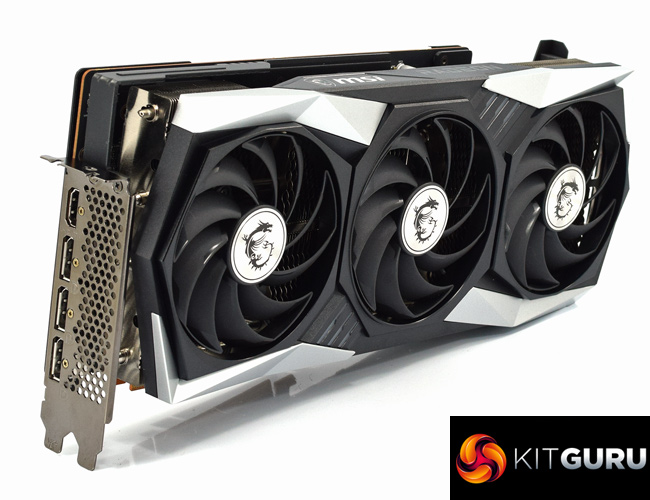With the MSI RX 6900 XT Gaming X Trio, we have taken our third look at an air-cooled RX 6900 XT graphics card. Of those three cards, the Gaming X Trio is the biggest, has the highest rated clock speed and also offers the highest power target of around 350W based on our testing.
Unsurprisingly, it is therefore the fastest air-cooled 6900 XT we have tested, coming in on average 3% faster than AMD's reference card at both 1440p and 4K. Compared to the Gigabyte Gaming OC, it is 1% faster across the board, while it is 3% slower than the RTX 3090 at 1440p and 7% slower at 4K.
Those are pretty small performance differences, especially when power draw has increased by 19% compared to the reference design. Thankfully, manually overclocking did net further gains of between 4-6%, but at the cost of even more power, with the card drawing almost 400W when pushed to the limit.
MSI has also continued its tradition of producing ultra low-noise coolers that clearly prioritise noise over thermals. Out of the box, the Gaming X Trio produced just 35dBa of noise, while we saw GPU edge temperature hit 75C. Once we noise-normalised to 40dBa, edge temperature dropped down to 64C, so there is clear scope to run a more aggressive fan curve and be rewarded with lower temperatures if that is your preference.
At least, that is the case for edge temperature. The junction temperature for the Gaming X Trio – that is, the single hottest point on the GPU die – proved more problematic, in that it actually ran hotter than even the reference card. That was true when we tested the stock fan curve and became even more evident once we had noise-normalised. The other 6900 XTs we've tested reported a 10-17C delta between their edge and junction temperatures once noise-normalised. For the Gaming X Trio, we saw a 33C delta.
The only potential explanation I have for this comes down to heatspreader/GPU die flatness, or an uneven distribution of pressure from the mounting system. The latter theory seems to be supported by the thermal paste spread of the GPU, with very little paste found in the centre of the die as it has been pushed to the edges. I did try re-pasting and re-mounting the cooler, but that didn't change the results.
It is also potentially noteworthy that MSI is not using a baseplate to contact with the GPU die, instead the heatpipes contact the GPU directly. Whether or not this is a factor, I really can't say – but all of the other 6800 XTs and 6900 XTs I have tested have used baseplates, and you would think that a baseplate is easier to machine flat than six heatpipes.
We have been in contact with MSI about our findings and were sent a second card to test, but that behaved exactly the same as our first sample. It is worth bearing in mind that the maximum junction temperature we saw was 102C, and AMD says up to 110C is in spec. Of course, that doesn't change the fact that the Gaming X Trio has the highest junction temperature of any 6900 XT we have tested so far.
When we factor that in, as well as the UK MSRP of £1259.99, it becomes very tricky to give this card a solid recommendation, especially as we know real world pricing will be far higher. Even if we go off the MSRP, that's still £180 above the Gigabyte Gaming OC, for not a whole lot of extra performance – and significantly hotter junction temperatures.
For now, my recommendation would be to hold off on the MSI RX 6900 XT Gaming X Trio. I initially thought my sample could have been defective, but having tested two cards with both showing hot spot temperatures exceeding 100C, we can say that is not the case. As good as it is in other areas, the hot spot issue is enough for me to recommend looking at another model if you do want to buy an RX 6900 XT.
We don't yet have a buy link for the Gaming X Trio, but we have been told the UK MSRP is £1259.99.
Discuss on our Facebook page HERE.
Pros
- Colour-neutral aesthetic.
- Very quiet out of the box.
- Overclocked relatively well.
- Power limit can hit 400W.
- 3% faster than reference.
Cons
- Junction temperature is significantly higher than the edge temperature.
- MSRP is very high.
- Just 1% faster than Gigabyte Gaming OC.
KitGuru says: There's potential for a good card here, but seeing two cards hit over 100C junction temperature is far from ideal.
 KitGuru KitGuru.net – Tech News | Hardware News | Hardware Reviews | IOS | Mobile | Gaming | Graphics Cards
KitGuru KitGuru.net – Tech News | Hardware News | Hardware Reviews | IOS | Mobile | Gaming | Graphics Cards

